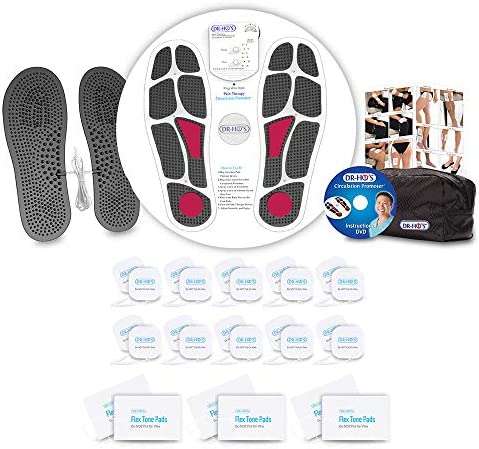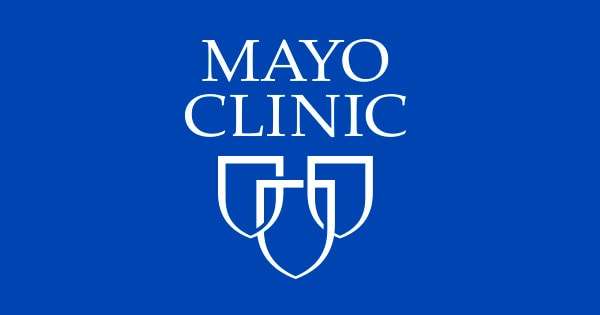By: Ryan Grace, Rehab Tech
Our main focus of this article is to cover the different types of physical therapy treatments and their definitions. You may find that some of these methods are also used throughout occupational therapy. Popular treatments and techniques commonly practiced today include:
- Acupuncture
- Aquatic therapy (Hydrotherapy)
- Aerobic activities
- Cardiopulmonary
- Dry needling
- Edema control (Dropsy)
- Electrical stimulation (Electrotherapy)
- Heat and cold therapy
- Floor exercises
- Manual therapy
- Motion and/or gait training
- Stabilization and/or balance training (Vestibular therapy)
- Therapeutic ultrasound
- Weight training
- Work hardening
Physical Therapy Treatment Definitions
Find out more about how these physical therapy treatments are used in the field.Acupuncture TherapyNeedles are used to prick the tissue or skin. This helps to relieve tension headaches or to help repetitive stress injuries along with shoulder pain or any muscle related pain. Acupuncture can also aid in autoimmune diseases and osteoarthritis.
Related article: “Is Dry Needling the Same as Acupuncture?”
Aquatic Therapy (Hydrotherapy)Aquatic therapy is practiced in a body of water such as a pool, which is usually heated to help relax muscles. This therapy helps patients who have difficulty exercising on land due to weight-bearing pain that may prohibit the development of functional muscle. It also helps improve flexibility and reduce joint pain and swelling. Since swimming is non-weight-bearing, aquatic therapy can help with joint pain, arthritis, and joint replacements. Aerobic ActivitiesAerobic activities are frequently performed through therapy. Some aerobic exercises include walking, swimming, and cycling. These activities reduce the risk of cardiovascular disease and type two diabetes, which can lead to further complications down the road. Exercise can also improve mobility; exercises given to the patient by the therapist have the sole purpose of helping the patient achieve normal function post injury. There are two types of exercises: passive and active exercise. Passive exercise is when a therapist applies the stress to the patient (such as a controlled stretch) while the patient tries to remain relaxed. Active exercises are controlled by the patient who will perform the exercise with his or her own strength. Cardiopulmonary TherapyCardiopulmonary therapy is specialized to help the patient following any cardiovascular (heart) or pulmonary (lung) issues or diseases such as diabetes, acute and chronic respiratory ailments, cystic fibrosis, or chronic obstructive pulmonary disease (COPD). This type of therapy can also help patients who have undergone heart valve replacements, bypass surgeries, or lung/heart transplants. Dry NeedlingDry needling is a therapeutic technique that requires a certification to perform. Dry needling is also known as intramuscular stimulation. This technique revolves around needles and trigger points for pain relief. The needles are placed into the skin to cease and relieve pain which helps alleviate muscle tightness and spasms to decrease recovery times.
Related article: “Why You Should Consider Dry Needling?”
Edema ControlEdema control, also called dropsy, is the collection of extra liquid in the tissues of the body, which causes swelling. Edema control is achieved when the patient is moving around and not sedentary so the extra fluid can migrate from the patient’s limbs and back toward the heart. Electrical StimulationElectrical stimulation, also referred to as electrotherapy, is used to interrupt pain receptors around the injury to help decrease pain. Another type of electrical stimulation technique o makes muscles contract so they develop muscle memory and re-learn how to operate. Hot and Cold TherapyHeat and ice or Hot and cold therapy can be used to treat shoulder pain, joint replacements, or anywhere the patient feels stiff, tight, and/or pain. Heat therapy is used to improve circulation and relax muscles to encourage muscle recovery while cold therapy is used to decrease inflammation during the initial phase of the injury. Floor ExercisesFloor exercises help with orthopedic issues. Exercising in general helps give the patient strength and stability if he or she continues to do the exercises on their own. Manual TherapyManual therapy is when the therapist massages or works on the patient’s injury. It is used to help decrease muscle tension, decrease pain, and improve muscle circulation. Motion and Gait TrainingMotion and/or gait training is most commonly used after a patient has a joint replacement or an overuse injury. Joint mobilization helps eliminate future problems most importantly for patients with prosthetics. This training can also be used for patients who suffered from a stroke or another neurological issue that impacted their walking abilities such as limited dorsiflexion, difficulty achieving knee extension or flexion, and hip extension. Neuroplasticity is a mechanism that helps your brain rewire and make new connections to achieve the best movement. Stabilization and Balance Exercises (Vestibular Therapy)Stabilization exercises can help a wide range of injuries especially when coupled with vestibular therapy techniques. Stabilization is needed for joints, knee or ankle/foot pain, and core stabilization for the spine. Balance training is an effective recovery technique in vestibular therapy, which may help with concussions, muscle weakness, joint weakness, and improving core strength. Balance training is also very important to increase muscle strength and help avoid future falls. Therapeutic Ultrasound TherapyTherapeutic ultrasound (different than diagnostic ultrasound scans) is a deep heating treatment for sprains, strains, or tendonitis. It is another physical therapy technique of pain management. Weight TrainingWeight training helps with osteoporosis, which is when the bone density decreases. Weight training can increase bone density to help decrease the chance of a fracture if the patient falls. Weight training also increases muscle strength, which help balance and coordination. Work HardeningWork hardening is a type of therapy that addresses a worker’s needs to help get back to work. This therapy usually follows a work-related injury involving lifting something heavy or operating heavy machinery.
Find out more about how these physical therapy treatments are used in the field.
We hope this has been helpful in explaining all the different types of physical therapy treatments out there and we encourage you to continue reading.
Learn More: “The Differences Between Physical Therapy and Physical Rehabilitation”
Physical therapists have a range of modalities, or treatment methods, they can choose from to help reduce pain and inflammation, as well as improve your endurance, strength, and range of motion as you rehab from a musculoskeletal injury or movement dysfunction.
Heat application, electrical stimulation, traction, and massage are just a few of the physical therapy modalities that may be used at different stages of your recovery. While some modalities may only be able to be used during a treatment session, others can also be done at home.
This article explores 12 common physical therapy modalities, including how and why they are used. If your therapist recommends one for you, they should be prepared to explain the reason for using the modality and what to expect from treatment.
Other Manual Therapies:
Massage Therapy
Spinal Manipulation
Osteopathic Manipulation
Before beginning manual therapy or any type of physical therapy, the practitioner usually performs a full assessment of the blood and nerve supply in the area, as well as a bone and muscle assessment, in order to decide whether or not there is an increased risk of complications from the use of these back pain management techniques. Depending on the results of that assessment and each individual back pain patient’s particular situation, the healthcare provider may perform some or a combination of the following types of manual physical therapy:
Soft Tissue Mobilization
It is important to recognize the role of muscles and their attachments around the joints. Muscle tension can often decrease once joint motion is restored, but many times the spasm will continue to be present. In such cases, muscle tension should be addressed or the joint dysfunction may return. The goal of soft tissue mobilization (STM) is to break up inelastic or fibrous muscle tissue (called ‘myofascial adhesions’) such as scar tissue from a back injury, move tissue fluids, and relax muscle tension. This procedure is commonly applied to the musculature surrounding the spine, and consists of rhythmic stretching and deep pressure. The therapist will localize the area of greatest tissue restriction through layer-by-layer assessment. Once identified, these restrictions can be mobilized with a wide variety of techniques. These techniques often involve placing a traction force on the tight area with an attempt to restore normal texture to tissue and reduce associated pain.
Also see The Graston Technique: An Instrument Assisted Soft Tissue Manual Therapy for Back Pain
advertisement
Strain-Counterstrain
This technique focuses on correcting abnormal neuromuscular reflexes that cause structural and postural problems, resulting in painful ‘tenderpoints’. The therapist finds the patient’s position of comfort by asking the patient at what point the tenderness diminishes. The patient is held in this position of comfort for about 90 seconds, during which time asymptomatic strain is induced through mild stretching, and then slowly brought out of this position, allowing the body to reset its muscles to a normal level of tension. This normal tension in the muscles sets the stage for healing. This technique is gentle enough to be useful for back problems that are too acute or too delicate to treat with other procedures. Strain-counterstrain is tolerated quite well, especially in the acute stage, because it positions the patient opposite of the restricted barrier and towards the position of greatest comfort.
In This Article:
- Manual Physical Therapy for Pain Relief
-
Specific Manual Physical Therapy Techniques
Joint Mobilization
Patients often get diagnosed with a pulled muscle in their back and are instructed to treat it with rest, ice and massage. While these techniques feel good, the pain often returns because the muscle spasm is in response to a restricted joint. Joint mobilization involves loosening up the restricted joint and increasing its range of motion by providing slow velocity (i.e. speed) and increasing amplitude (i.e. distance of movement) movement directly into the barrier of a joint, moving the actual bone surfaces on each other in ways patients cannot move the joint themselves. These mobilizations should be painless (unless the operator approaches the barrier too aggressively).
Muscle Energy Techniques
Muscle energy techniques (METs) are designed to mobilize restricted joints and lengthen shortened muscles. This procedure is defined as utilizing a voluntary contraction of the patient’s muscles against a distinctly controlled counterforce applied from the practitioner from a precise position and in a specific direction. Following a 3-5 second contraction, the operator takes the joint to its new barrier where the patient again performs a muscle contraction. This may be repeated two or more times. This technique is considered an active procedure as opposed to a passive procedure where the operator does all the work (such as joint mobilizations). Muscle energy techniques are generally tolerated well by the patient and do not stress the joint.
advertisement
High Velocity, Low Amplitude Thrusting
The goal of this procedure is to restore the gliding motion of joints, enabling them to open and close effectively. It is a more aggressive technique than joint mobilizations and muscle energy techniques that involves taking a joint to its restrictive barrier and thrusting it (low amplitude of less the 1/8 inch) to, but not past, its restrictive barrier. If utilized properly, increased mobility and a decrease in muscle tone about the joint should be noticed. This technique is utilized for restoration of joint motion and does not move a joint beyond its anatomical limit. Therefore, no structural damage takes place and the patient should not have an increase in pain following the treatment.
See Spinal Manipulation: High-Velocity Low-Amplitude (HVLA)
Maintaining Back Pain Relief Long-Term
To continue the healing process and prevent recurring pain, back pain patients are encouraged to engage in other appropriate treatments (including an exercise program) during and after manual therapy treatment. Exercise programs for back pain usually include stretching and strengthening exercises and low-impact aerobic conditioning, and should include a reasonable maintenance exercise program for patients to do on their own. The goal is to maintain the right type and level of activity to prevent the pain from re-occurring and avoid the need for frequent return visits to the therapist.
Pagination
Pages:
- 1
-
2
advertisement



